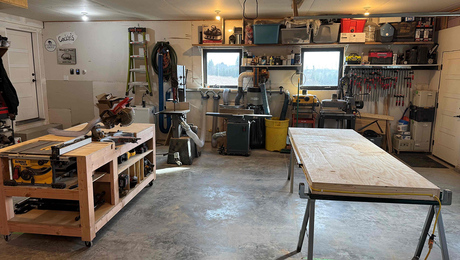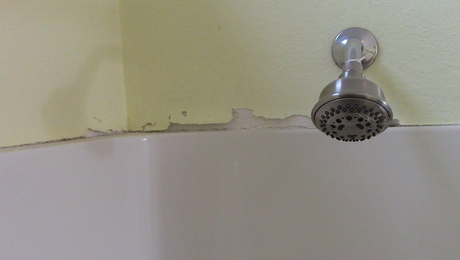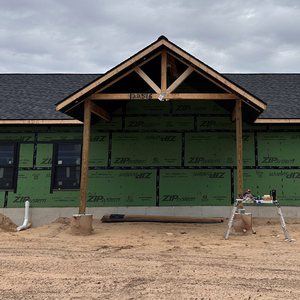Podcast Episode 684: Masonry Heaters, Whole-House Ventilation, and Porch Flooring
Listeners write in about fireplaces and ask questions about whole-house ventilation, traditional porch flooring, and gutter sealants.
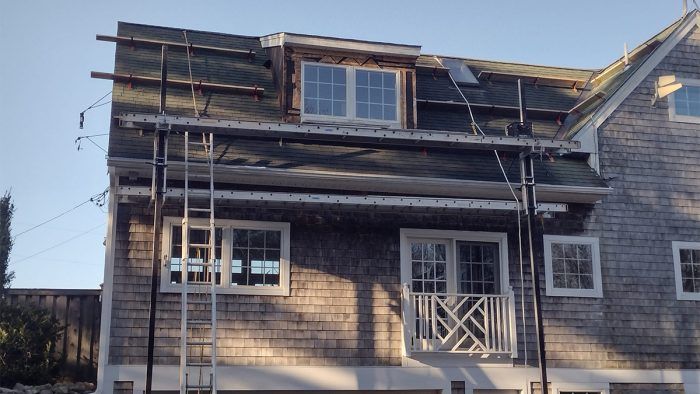
Welcome to the Fine Homebuilding podcast, our weekly discussion of building, remodeling, and design topics aimed at anybody who cares deeply about the craft and science of working on houses. This is senior editor Patrick McCombe. I’m joined by Fine Homebuilding associate editor Grant Baver, Fine Homebuilding editorial advisor Mike Guertin, and producer Andres Samaniego. Please email us your questions to [email protected].
You can find previous podcasts and check out the show notes at finehomebuilding.com/podcast.
Check in:
Mike: Fixing failed doors and replacing a roof from the top down
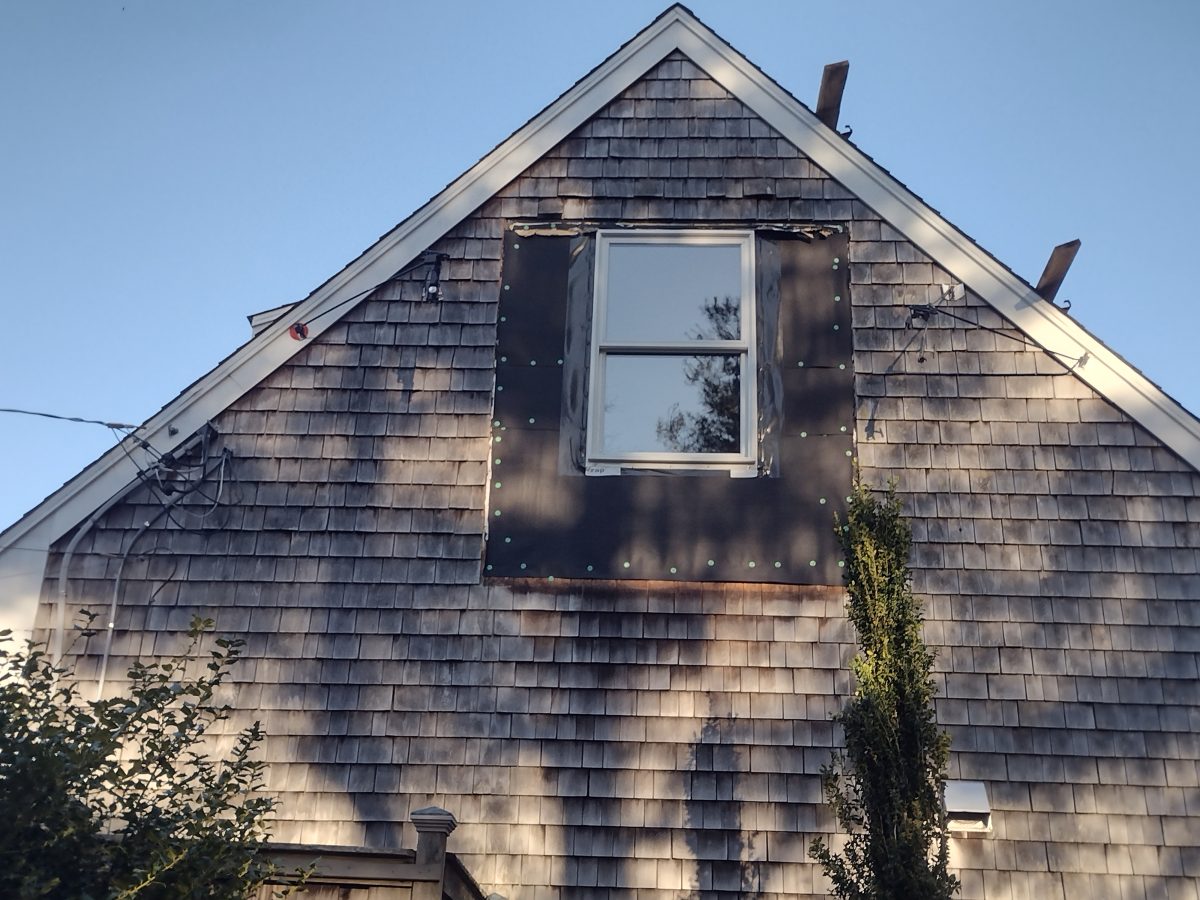
Andres: Equipter Demolition Trailer
Listener Feedback 1: Discussion of fireplaces in Podcast 679
Kerry writes:
Hi Patrick, Grant, Andres, and Brian,
First, it was funny how I heard the out-of-place, distinct voices of Patrick and Andres standing out above the crowds at JLC Live before verifying the voices were real—and in the cafe line next to me!
I did a basement job last spring removing fiberglass in the ceiling and installing foam board on the walls. I dreaded removing that gross fiberglass, but it turned out fairly painless. I used a hooded Tyvek suit, a cheap full-face respirator, gloves, and a filter box. I can’t remember the official name, but using a site-built cube with four furnace filters and a box fan was a game changer for me and the homeowner. (Check out an example of Corsi-Rosenthal Box.) There was no dust or smell in the air when we were done yanking and bagging.
Next, I have some friends who were early adopters of passive design and construction, some of whom grew up among the trees and therefore burned trees too. It’s in their blood—probably literally, like ash and stuff. These folks use woodstoves in their tight, high-performance homes. It’s funny what professionals choose to do on their own homes despite the standards they have for their customers.
I think I remember correctly that woodstoves typically draw about 10 CFM with the draft, so they technically can operate in most high-performance homes. “Sealed combustion” seems to be optimistic and rarely true. Typically, they will run their balanced ventilation unbalanced with positive pressure to help with the draft. Another helpful practice is to keep the flue pipe within the building enclosure to keep it warm and help with starting a fire (in the woodstove).
There are concerns, but these people are professional building geeks. There is a real risk of backdraft with the range hood running for example. The backdraft potential is also higher when the fire is dying down and draft is less. But they have used their manometer to check if building pressure is safe. Then, of course, they have air-quality monitors on the dining room table at all times next to the floral arrangements. Basically you can burn wood in a high-performance house, but you had better be a building geek or it could be very harmful.
-Kerry
Kerry Koskinen
Retrofuture Remodeling
Westminster, Mass.
Listener Feedback 2: Discussion of fireplaces in Podcast 679
Bucky writes:
Hi Patrick and crew,
I love your podcast and all of the amazing information that you all disseminate. I’m a small specialty-lumber producer (commonly called an Urban Wood Producer, even though I’m in the country.) So my mission is to maximize the value to be found in biomass waste—mostly unwanted logs. When processing logs into lumber there’s always more waste created. The last link in the value chain is as a composting ingredient, or, relevant to our discussion, as a heating fuel. In this day and age, it is critical to use the best tech to get the most heat and the lowest emissions.
You were right to discourage the building of a fireplace, since such an appliance can result in a net loss of heat, especially if built on an exterior wall. An open fireplace generally gets too much air sending hot gasses up the chimney before they have had a chance to heat anything. Masonry heaters are the technology that’s been reinvented in cultures throughout the world for thousands of years. They tend to have more interior space for the hot gasses to reside long enough that the heat is scrubbed into the mass of the heater. They also operate at temperatures too hot for steel or iron to endure long term. That’s why masonry thermal-mass heaters are usually only burned two or three times a day but radiate heat continuously.
It is a common practice to built these heaters with an outside combustion air duct. Even though they may be a little more costly than a masonry fireplace or woodstove, they are a much better value. Also, some Americans are on a journey to discover our own masonry-heater designs in the rocket-stove movement and have the advantage of being able to consult with each other and experts from around the world on the Web. This week, heater masons from around the world will meet deep in the Blue Ridge mountains for the annual meeting of the Masonry Heaters Association to share the latest knowledge of this science and keep the ancient craft alive. Go to https://www.mha-net.org/ to learn more about this amazing group of craftspeople.
So keep encouraging better building and keep craft alive.
Bucky Black
Question 1: Do you need dedicated ductwork with an ERV?
Spenser writes:
Hey guys,
My wife and I are a young couple building our first home in Michigan. Here are the details of the home:
- Ranch (3 bed, 2 bath)
- Slab-on-grade (1600 sq.ft.)
- 6/12 shingled, vented roof
- 2×6 exterior walls
- 9-ft. flat ceilings
- Zip system wall sheathing
- Radiant in-floor heating
- Multihead minisplit system
We were planning on closed-cell foam/cellulose damp spray for wall insulation and blown-in cellulose for the ceiling.
We have recently been learning more and more about building science and now realize that our current heating/cooling design has some drawbacks when it comes to bringing in fresh air and filtering out stale, humid indoor air (considering there isn’t a dedicated duct system).
We question if we need an ERV? If we do, where should we place the ductwork for it, considering it will have a traditional vented roof and no basement? Can insulated flex ducts run on the floor of the attic then be buried with the attic insulation? Do we build bulkheads to hide them, or go for the industrial look with exposed ductwork? We realize now that we should’ve learned about how our home’s HVAC systems will operate before starting to build, but here we are.
Spencer
RELATED STORIES
- Choosing Between HRVs and ERVs
- Running Ducting for an ERV
- HVAC Design for a Tight House
- VIDEO: Principles of Residential Ventilation
Question 2: Can you recommend a wood or composite porch flooring product that would hold up well? Do you know how to repair box gutters without totally relining them? Any recommendations for a railing on a widow’s walk?
Adam write:
Hello FHB podcast crew!
I’ve been a listener since the inception of the podcast and have appreciated the progression. Whenever I suggest the podcast to others I say: “It’s kind of like Car Talk, but for buildings”…which, in my opinion, is a huge compliment.
I have a multi-part question about working on a particular home, but first here’s a little background about the home and my relationship to working on it.
The home belongs to a previous and continuous client of mine, was built in 1907, and is located in Hickory, N.C. within our historic district. Referencing A Field Guilde to American Homes, I believe the home is considered to be Colonial Revival. I’m a builder/remodeler, and I live and work in the Hickory area and am a proud member of our local Historic Preservation Commission. Twelve years ago, when I first moved back to Hickory, I was a project manager for an addition that was built on the rear of the home, and since starting my own business in 2018 I’ve done several other remodeling projects within the home. The exterior walls are all triple with brick all the way to the attic, and they are in great shape as well. Of all the historic home in the city, this is my favorite. To add a cherry on top, the clients are of equal quality and charm as the home itself.
I have a few maintenance projects coming up that I would love some help with.
The first is the porch floor. It’s made of 3-1/2 x 1-in. tongue-and-groove material (I believe the material is fir). We’d like to replace it with a product that could pass for historic but hopefully will be more durable. The masonry column bases were added after the home was originally built, and, while beautifully done, they now trap water (see attached photos). I plan to add a drainage gap around the interior perimeter with Cor-A-Vent or some other product to help alleviate this issue. Can you recommend a wood or composite product that would hold up well? I’ve worked with Duration Mouldings a lot, but I didn’t see any deck-board products in their catalog, and I imagine that’s because of how brittle it is. My next thought was to use thermally modified wood that we could paint or stain, but I’ve never worked with it and I don’t know if it’s worth the cost for a floor application. Or should I just go back with wood? Is there a composite product that would work while maintaining the character of the existing floor?
The next question is the gutter sealant for the box gutters. The client had a roofing contractor apply this. I’m under the impression that it will likely lose adherence to the gutters, and we’ll need to replace the lining with copper, which is a large expense. Do you have any experience or knowledge in repairing box gutters without totally relining them?
Finally, the client asked me to take a look at the railing on the widow’s walk. When I opened the roof hatch and took a step, I discovered the EPDM membrane had a water-filled bubble in it at a joint lap. It popped like a pimple when I stepped on it. The roof is in need of replacement. To make sure the railing stays in good condition, I’m thinking the best approach would be to add some type of sub-post to mount new railing on prior to installing the new roofing. I could properly flash the sub-post and slide post caps over top of the sub-post so that I’m not compromising the waterproofing with screws or other fasteners. I’ll probably build the railings out of a Boral- or Duration-type product. Any thoughts? Have you ever worked with a situation like this?
I’m humbly asking for any and all advice to make sure I’m doing the best possible service to the home and to my client.
Thanks for all you do!
Adam Oakley
Oakley Building Co.
 |
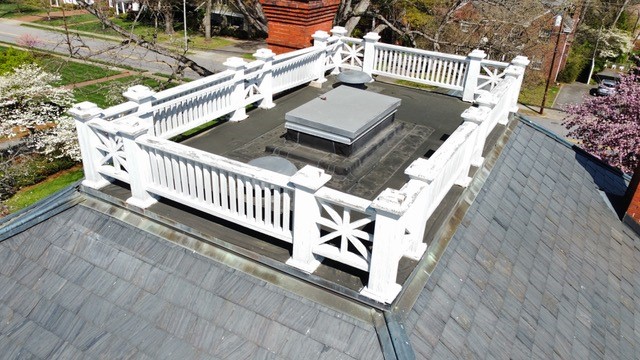 |
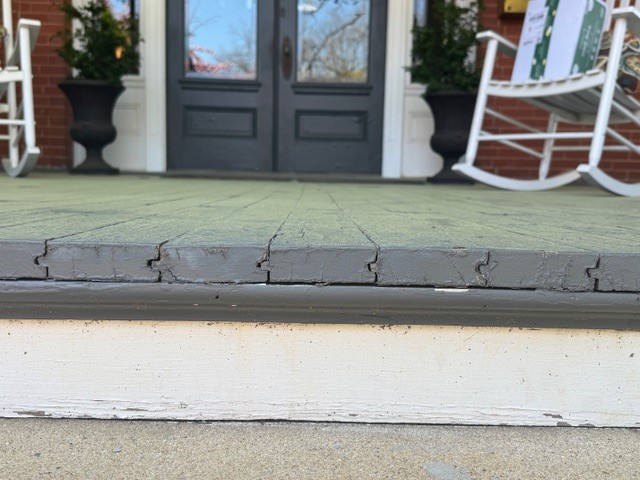 |
RELATED STORIES
- Trouble Spots on a Covered Porch
- The Rotproof Porch
- Fixing Common Gutter Blunders
- Widow’s Walks
- Widow’s Walk: An Inside Look at an Uncommon Roof Feature
Sign Up for an All-Access Membership.
Unfortunately that is all the time we have for today. Thanks to Mike, Grant, and Andres for joining me and thanks to all of you for listening. Remember to send us your questions and suggestions to [email protected] and please like, comment, or review us no matter how you’re listening–it helps other folks find our podcast.
Happy Building!
Fine Homebuilding Recommended Products
Fine Homebuilding receives a commission for items purchased through links on this site, including Amazon Associates and other affiliate advertising programs.

Affordable IR Camera

Reliable Crimp Connectors

8067 All-Weather Flashing Tape
